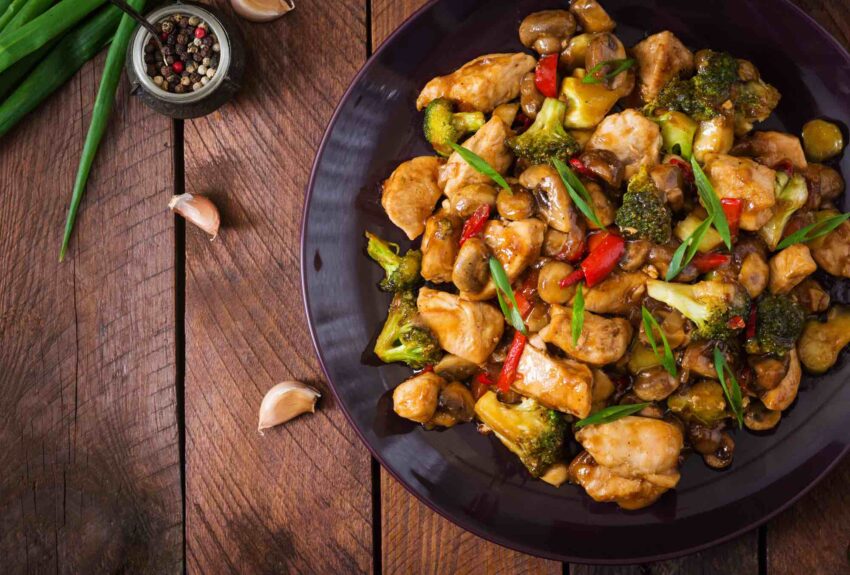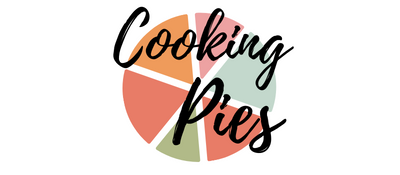What is ‘Low GI’ and Why It’s Important

The glycemic index is a measurement system that ranks foods based on their impact on blood sugar levels. By understanding how different foods affect your blood sugar, you can make informed choices about what you eat.
Low GI foods are those that have a smaller impact on blood sugar levels. Incorporating these foods into your diet can offer numerous health benefits, including weight management and improved diabetes control.
Table of Contents
What is the Glycemic Index?
The glycemic index is a numerical scale that ranks carbohydrate-containing foods according to their effect on blood sugar levels. It ranges from 0 to 100, with higher values indicating a greater impact on blood sugar.
How it’s calculated
The GI value of a food is determined by measuring the rise in blood sugar levels after consuming a portion of the food that contains a set amount of carbohydrates, typically 50 grams. This increase is then compared to the rise in blood sugar after consuming the same amount of carbohydrates from a reference food, usually pure glucose or white bread.
GI values are generally divided into three categories:
- Low GI: 55 or less
- Medium GI: 56-69
- High GI: 70 or more
Low GI foods have a smaller impact on blood sugar levels, while high GI foods cause a more rapid and substantial rise.
Glycemic Index (GI) vs Glycemic Load (GL)
You’ll often see Glycemic Load (GL) values given along side GI values, so how are these two values different?
Glycemic index (GI), measures the impact of a carbohydrate-containing food on blood sugar levels, wheras glycemic load (GL) takes both the quantity and quality of carbohydrates into account. In other words, GI focuses on how quickly a carbohydrate is absorbed and raises blood sugar levels, whereas GL considers the overall effect of a food’s carbohydrates on blood sugar levels. This distinction is important because some high GI foods may have a low GL, and vice versa.
Factors that Affect GI Values
There are three common factors that can affect the GI value of certain foods.
1. Ripeness and maturity of fruits and vegetables
The ripeness of fruits and vegetables can influence their GI values, with riper produce generally having a higher GI due to increased sugar content.
2. Processing and cooking methods
Processing and cooking methods can affect the GI value of foods. For example, cooking pasta until it is very soft raises its GI, while al dente pasta has a lower GI.
3. The fat, fiber, and protein content of foods
Foods high in fat, fiber, or protein tend to have lower GI values because these nutrients slow down the digestion and absorption of carbohydrates, thus reducing the impact on blood sugar levels.
So, Why is Low GI Important?
High GI foods cause rapid spikes in blood sugar levels, which can lead to a subsequent crash, leaving you feeling hungry and fatigued. These fluctuations can be particularly problematic for individuals with diabetes, who need to maintain stable blood sugar levels for optimal health.
Risks of consuming high GI foods
Regular consumption of high GI foods has been associated with an increased risk of developing type 2 diabetes, heart disease, and obesity. Additionally, these foods can contribute to energy crashes and increased hunger, making it more difficult to maintain a healthy weight.
Benefits of consuming low GI foods
Low GI foods are linked to better weight management, improved blood sugar control, and a reduced risk of chronic diseases. They also help promote satiety, reducing the likelihood of overeating and helping to maintain consistent energy levels throughout the day.
Benefits of Low GI Foods for Weight Management
Low GI foods take longer to digest and have a more gradual impact on blood sugar levels. This helps to control hunger and prevent overeating, making it easier to achieve and maintain a healthy weight.
Low GI foods often contain higher amounts of fiber, protein, and healthy fats, which contribute to feelings of fullness and satisfaction. These nutrients help to slow the absorption of carbohydrates, keeping blood sugar levels stable and reducing the likelihood of cravings and hunger pangs.
Benefits of Low GI Foods for Diabetes Management
Incorporating low GI foods into the diet can help individuals with diabetes better manage their blood sugar levels. These foods cause a slower, more gradual rise in blood sugar, making it easier to maintain consistent levels and avoid dangerous spikes or crashes.
Studies have shown that low GI diets can help reduce the risk of developing type 2 diabetes, improve blood sugar control in those already living with the condition, and lower the risk of diabetes-related complications.
High GI Foods to Limit or Avoid
High GI foods include white bread, white rice, many breakfast cereals, sugary beverages, and processed snacks like cookies and chips.
As mentioned earlier, regular consumption of high GI foods can increase the risk of type 2 diabetes, heart disease, and obesity. Additionally, these foods can contribute to unstable blood sugar levels, leading to energy crashes and increased hunger.
Tips for reducing consumption of high GI foods
To reduce your intake of high GI foods, try the following strategies:
- Choose whole grains over refined grains, such as brown rice, whole wheat bread, and whole grain pasta.
- Opt for fresh fruits and vegetables instead of processed snacks and sugary treats.
- Limit your consumption of sugary beverages, including sodas, fruit juices, and sports drinks.
Foods with Low GI Values
Low GI foods include most non-starchy vegetables, whole fruits, legumes, whole grains, and lean proteins like fish, poultry, and tofu.
Incorporating low glycaemic foods into your diet is simple. Start by making half of your plate non-starchy vegetables, a quarter lean protein, and a quarter whole grains or starchy vegetables. Snack on whole fruits, nuts, and seeds instead of processed options.
You can search for foods GI values at glycemicindex.com.
Low GI Snacks
If you’re someone who like to snack throught the day, but want to keep your energy and blood suggar levels in-check, there are some great low GI snack options, such as nuts, seeds, and fruits. Some of our favourite options include:
- A handful of almonds or walnuts
- Greek yogurt with berries
- Apple slices with peanut butter
- A small bowl of air-popped popcorn
- Peanut Butter and Banana Toasties
For more snack ideas and options, check out our list of low GI recipies.
Creating your own GI friendly snacks at home is easy. Combine whole fruits with a source of protein, like nuts or yogurt, for a satisfying and blood sugar-friendly option.
To make healthy snacking a habit, keep a variety of healthy options on hand, such as nuts, seeds, and fresh fruits. Plan your snacks ahead of time to avoid reaching for high GI options when hunger strikes.
Low GI Recipe Ideas
Try some of these low GI recipes for delicious and nutritious meals:
- Lentil soup with whole grain bread
- Pearl Barly Pumpkin Risotto with Chicken
- Grilled chicken and vegetable kabobs with quinoa
- Whole grain pasta with roasted vegetables and marinara sauce
For more recipe ideas and meal options, check out our list of low GI recipies.
How to Make your traditional recipes low GI
To transform your favorite recipes into healthier versions, substitute refined grains with whole grains, incorporate more non-starchy vegetables, and choose lean protein sources and low gi carbohydrates.
Plan your meals around low GI foods and use the plate method (half non-starchy vegetables, a quarter lean protein, and a quarter whole grains or starchy vegetables) as a guide. Include a variety of low GI options to keep your meals interesting and satisfying.
How to Incorporate Low GI Foods into a Balanced Diet
While focusing on low GI foods is important, it’s also essential to prioritize overall dietary quality, including a balance of nutrients from various food groups.
When planning your meals, emphasize whole, minimally processed foods with a low GI value. Include a mix of lean proteins, whole grains, and plenty of fruits and vegetables to ensure a nutrient-rich, balanced diet.
Experiment with new recipes and meal ideas that feature low GI foods, such as:
- Veggie stir-fry with tofu and brown rice
- Chia seed pudding with fresh fruit
- Chickpea and vegetable curry with whole grain naan
By incorporating a variety of foods, you’ll keep your meals interesting and enjoyable while reaping the health benefits.
Limitations of the Glycemic Index
The glycemic index is a helpful tool, but it’s essential to recognize its limitations. Factors like cooking methods and food combinations can influence the GI value of a meal, making it difficult to predict the precise impact on blood sugar levels.
While low GI foods are generally healthier choices, it’s still essential to consider portion sizes and the overall nutrient composition of your meals. Eating excessive amounts of low GI foods can still contribute to weight gain and other health issues.
Managing blood sugar levels involves more than just focusing on foods. A comprehensive approach, including regular physical activity, stress management, and a balanced diet, is crucial for overall health and wellness.
Summary
Low GI foods play a vital role in promoting overall health and wellness, offering benefits like better weight management, improved diabetes control, and a reduced risk of chronic diseases.
Incorporating low GI foods into your daily diet can provide sensational flavors and fragrances while supporting optimal health. Embrace a diverse array of low GI options to keep your meals interesting and satisfying.
Understanding the glycemic index empowers you to make informed food choices, taking control of your health and well-being. By focusing on low GI foods and maintaining a balanced diet, you can enjoy delicious, nourishing meals that support long-term health.




Leave a Reply